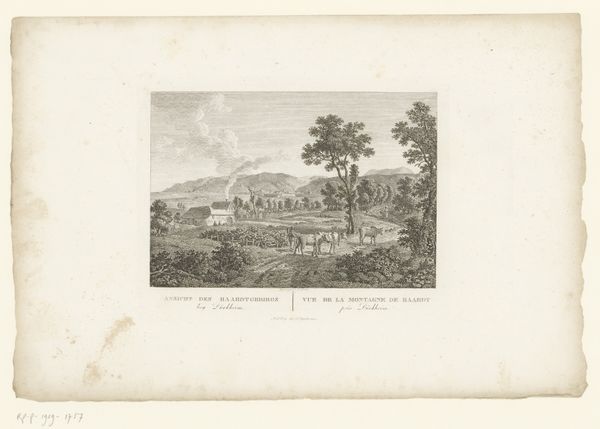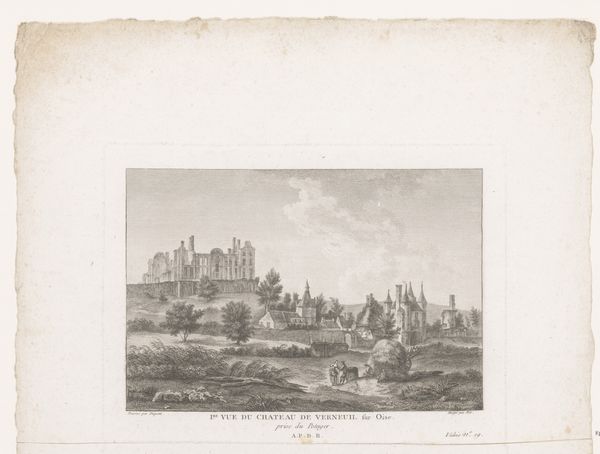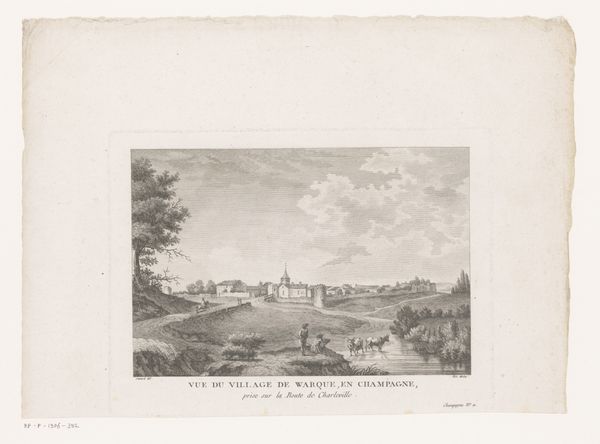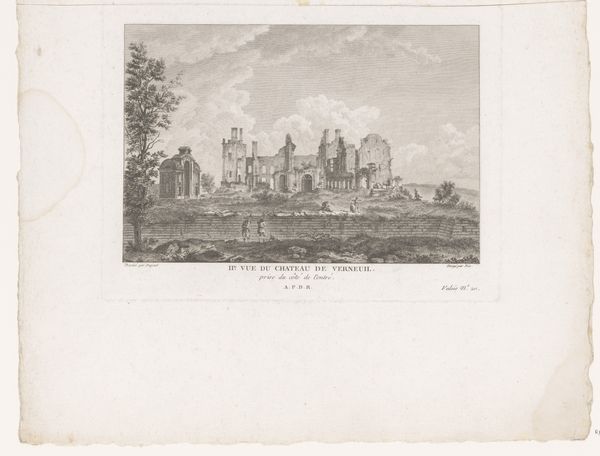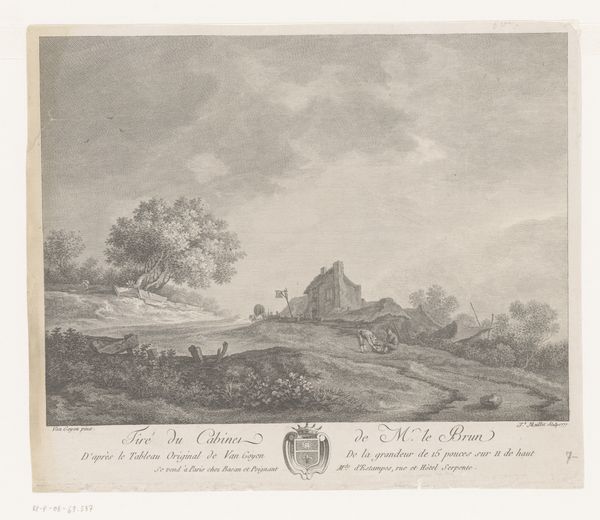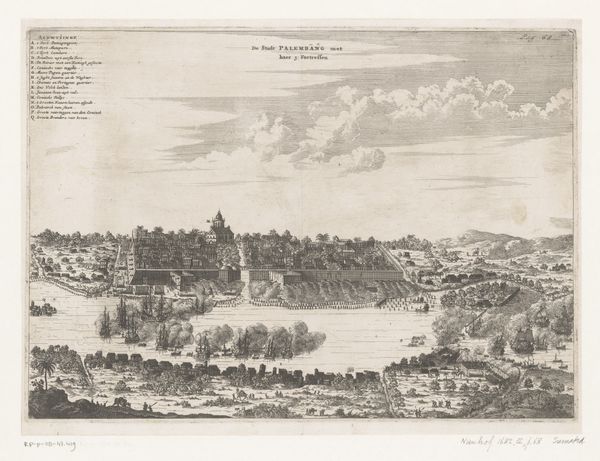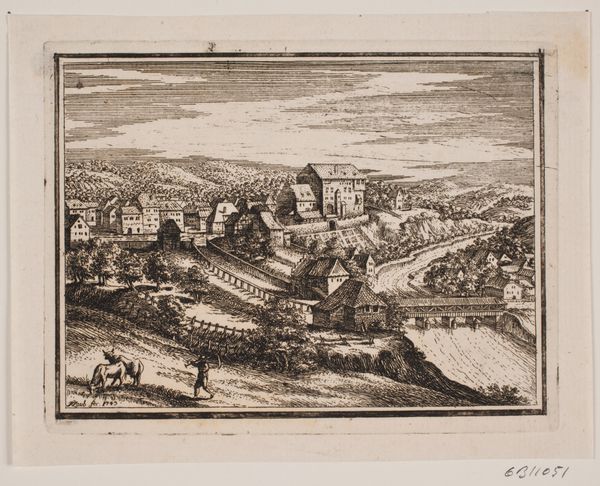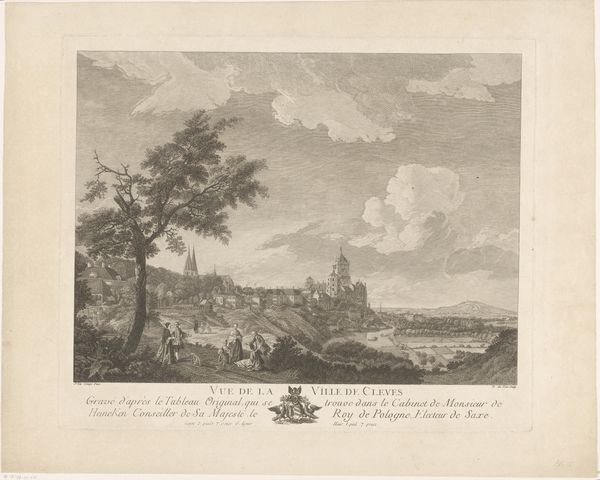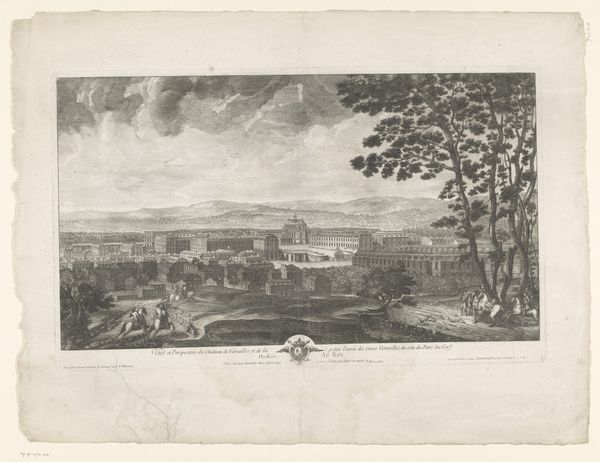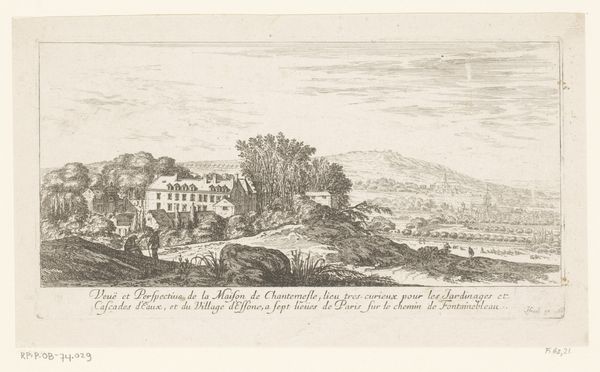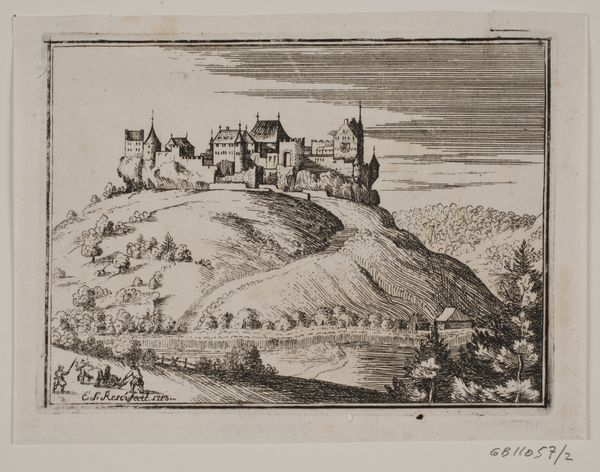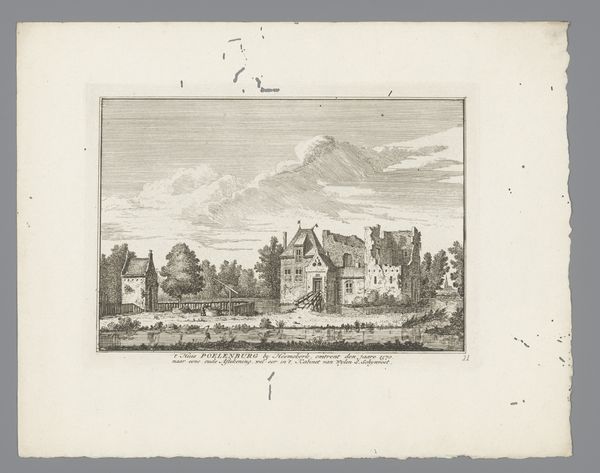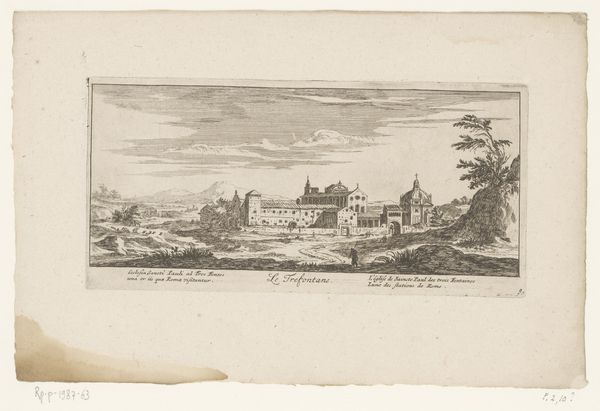
Dimensions: height 293 mm, width 431 mm
Copyright: Rijks Museum: Open Domain
Curator: A hauntingly beautiful cityscape. It feels like a memory, faded but potent. Editor: It does have an antique feel. We’re looking at “View of the Château de Polignac” by François Denis Née. It’s an engraving, placing its creation somewhere between 1749 and 1817. It's currently held in the collection of the Rijksmuseum. Curator: That makes sense given the style. Engravings like this served as cultural documents. Château de Polignac has an incredible lineage, tied to powerful families, including connections to royalty. See how it looms, both imposing and crumbling. The ruins themselves become symbols of lost power, prompting reflection on time's passage. Editor: The stark contrast achieved in the engraving really brings out that tension. The artist utilizes line and shadow to articulate depth—the foreground foliage in sharp detail against the more subtly rendered castle perched on its hilltop. Curator: That layering speaks volumes, right? There's this constant play between what was and what is. The tiny figures moving through the landscape also emphasize the insignificance of human affairs when set against the backdrop of history. Almost like Romantic ruins, they hint at nostalgia and reflect on mortality, echoing common Romanticism and Neoclassical sentiments from that period. Editor: Precisely. I'd argue the meticulous details and the overall sense of balanced composition are strongly Neoclassical, yet that air of wistful contemplation gives it that Romantic undertone. What's striking is how the structure becomes a vessel of symbolism. It’s a commentary on resilience, a metaphor for society itself undergoing continuous construction and deconstruction. Curator: Yes! The symbol has layers... like a collective memory of societal shifts captured in a single viewpoint. This piece allows us to peer back at a pivotal moment, while still recognizing reflections in our present-day world. Editor: It makes one consider the lasting imprint structures leave on culture, even—or perhaps especially—as they fade. Thanks for revealing these visual cues; seeing this landscape through your interpretive lens deepens the experience.
Comments
No comments
Be the first to comment and join the conversation on the ultimate creative platform.
